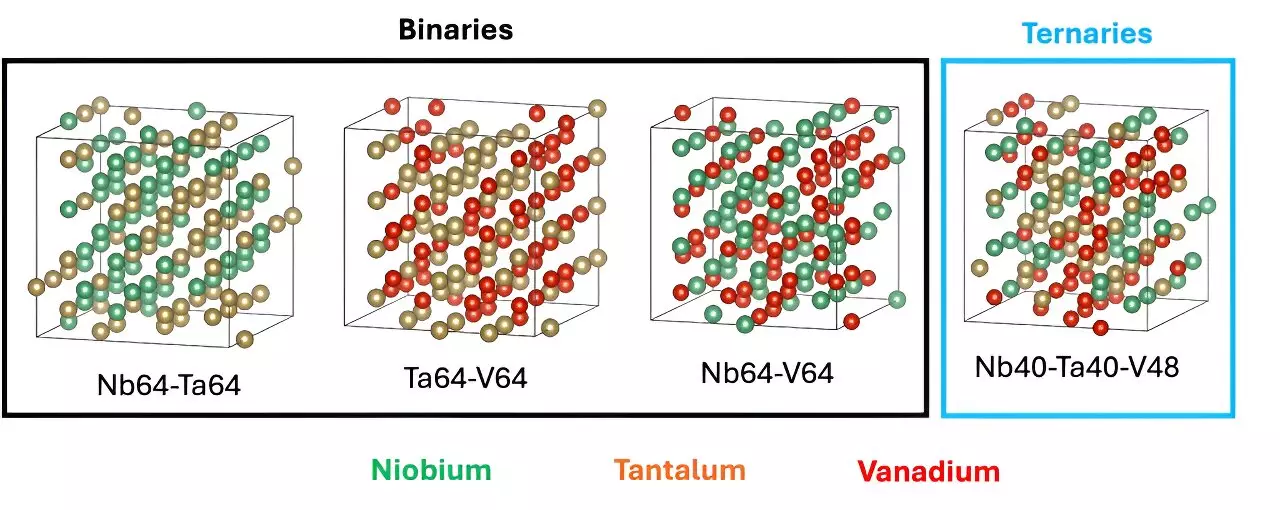The integration of artificial intelligence (AI) into various scientific fields continues to revolutionize traditional methodologies, particularly in materials science. A groundbreaking study from the Department of Energy’s Oak Ridge National Laboratory (ORNL) reveals significant advancements in identifying new alloys for shielding components in nuclear fusion reactors. This research is set to redefine the approach to material discovery, particularly in environments requiring exceptional thermal and structural integrity.
Under the guidance of Massimiliano Lupo Pasini, an AI data scientist at ORNL, and formerly initiated by David Womble, the project delves deep into the exploration of alloys specifically designed for high-temperature applications in fusion technology. The findings, published in the journal *Scientific Data*, highlight a crucial shift from conventional methods to AI-assisted discovery. Historically, tungsten-based alloys formed the backbone of nuclear shielding, but these materials struggled with consistency and overall performance under extreme conditions.
Traditionally, the alloy creation process involved selecting tungsten as the primary component and adding supplementary elements in a somewhat arbitrary manner. This method often led to unpredictable results in terms of material performance—highlighting the inefficiencies inherent within the trial-and-error tactics commonly employed in material science research. Lupo Pasini and his team recognized the necessity for a more robust approach that could leverage AI’s computational power to optimize these alloy formulations.
One of the primary challenges in alloy research lies in the nearly infinite combinations of potential metallic elements. With numerous variables to consider, researchers faced significant hurdles in identifying viable candidates for new alloys. However, AI’s ability to manage vast datasets allows for a level of analysis that was previously unattainable. By employing AI-driven insights, the team was able to significantly reduce the timeline for identifying promising metallic combinations.
Lupo Pasini collaborated closely with researchers such as German Samolyuk and Jong Youl Choi, pooling their expertise to create a comprehensive AI model. This model was designed to sift through extensive data, ultimately highlighting three specific elements to advance into testing as fresh alloy candidates. This collaborative effort underscores the interdisciplinary nature of modern scientific discovery, combining computation, physical sciences, and artificial intelligence to forge new paths in material development.
While the generated AI database is a promising starting point, it serves merely as one element of a larger, ongoing project. To fully realize the potential of new refractory high entropy alloys—those comprised of a diverse mix of elements—the team faces further challenges. One critical limitation is the resources required for quantum mechanical calculations, which are essential for understanding the properties of newly proposed materials. As Lupo Pasini pointed out, the existing computational methods can be both time-consuming and costly, necessitating continuous innovation in how researchers approach materials design.
To further this initiative, the researchers aim to refine their AI models to enhance the discovery and design processes for alloys. As they work to define the optimal combinations of six crucial elements, they seek to provide material scientists with the necessary tools to efficiently determine the ideal ratios for creating these innovative alloys. This transition signals a broader shift towards AI-led methodologies in material sciences, opening avenues for solutions that could exceed current technological capabilities.
The intersection of artificial intelligence and materials science has yielded significant progress in the quest for advanced nuclear fusion technologies. By moving beyond traditional approaches and embracing data-driven methodologies, researchers like Lupo Pasini and his team are poised to reshape the landscape of alloy discovery. As the initiative evolves into the next phases of development and testing, the implications for further technological advancements in fusion energy and material science are both profound and exciting. Ultimately, these pioneering efforts could significantly influence the efficacy and safety of fusion reactors, contributing to the broader pursuit of sustainable energy solutions for the future.


Leave a Reply